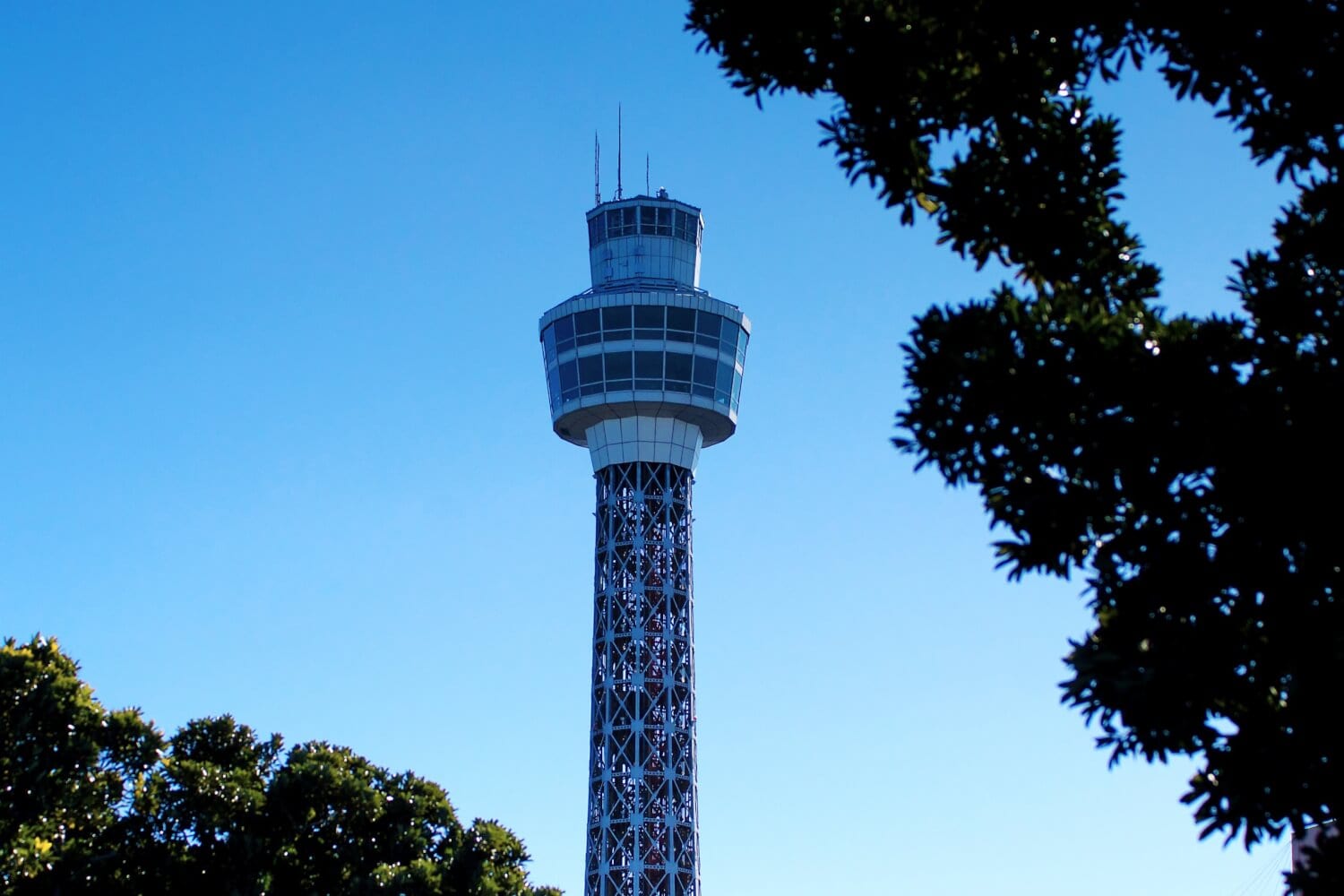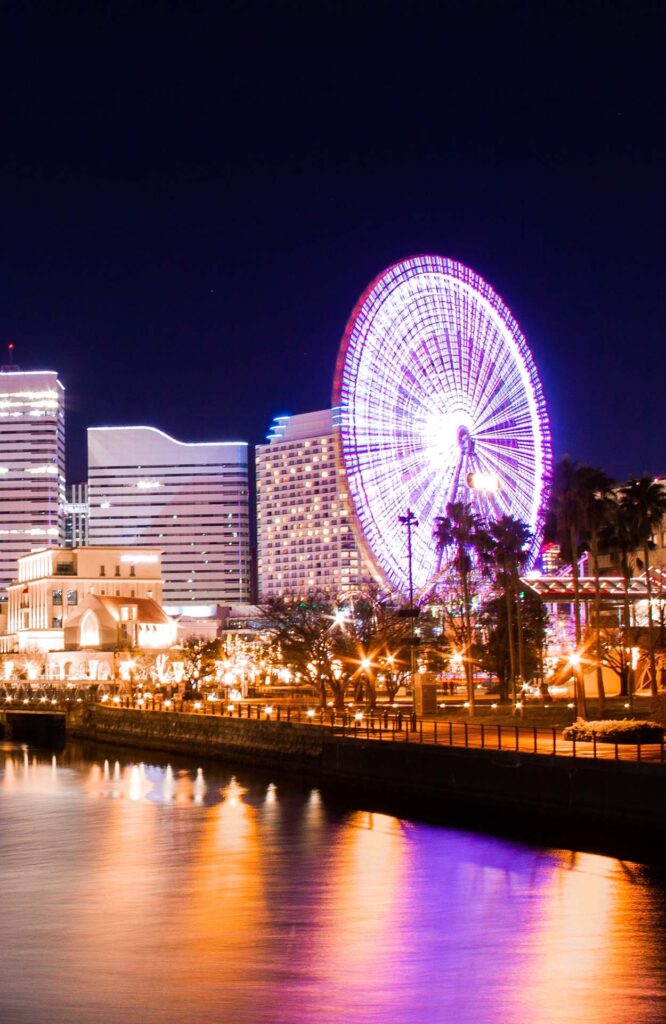

32010276424 90cb7fa7cf o
About an hour from Tokyo lies the seaside town of Yokohama. It is the second largest city in Japan with a population of 3.7 million. Despite being such a big city it still keeps the small town feel that it once had when it was first established. Yokohama makes for an easy day-trip from Tokyo. It’s a scenic escape with a myriad of peaceful gardens and exciting activities.




To get to Yokohama, you simply need to take a train from Tokyo on the Tokyu-Tohoku Line, JR Tokaido Line or Keihin-Tohoku Line. It can take anywhere from 20 to 40 minutes to arrive, depending on where you are leaving from, but no matter the departure point, Yokohama is less than an hour away.
Yokohama is most notable for its large, international seaport but it was not always such a hub. Before 1859 it was no more than a small fishing village. For years and years, Yokohama remained isolated until the port was built and with it came foreign trade and a great economic surge.
The port was officially opened on June 2nd, 1859, and immediately became the centre of international trade in Japan. Asian immigrants and Japanese settlers began occupying the low-lying districts of the city while the English residents took up in areas overlooking the city, an district now dubbed “The Bluffs”.
The biggest trade industry in the port was silk, and their largest trading partner was Great Britain. With westerners coming into port more and more, they brought with them, Western technology. In the 1870s Yokohama saw the construction of their first newspaper press, the installation of gas powered street lamps and even their first railway – connecting Yokohama to bigger cities like Tokyo and Shinagawa. Jules Verne famously wrote about the city of Yokohama in his book, “Around the World in Eighty Days” despite never actually visiting. He described the city as a fast-developing and international landscape with flourishes of Japanese flare.
A walk along the waterfront is the perfect way to introduce yourself to the city. The Osanbashi Pier is a modern piece of urban design made from wood and grass but despite its contemporary appearance it still feels like an old fashioned boardwalk. From here you can view all the different boats and ferries coming into the port. Parked right out front on the water is the museum ship Hikawa Maru. The Hikawa Maru first set sail in 1929 and made the journey from Kobe to Seattle. After years of wartime service, the ship was permanently berthed in 1961 and turned into a floating museum, hotel and restaurant.
Yokohama Marine Tower is the tallest inland lighthouse in the world, standing 106 meters-tall. On a clear day, visitors in the tower can see all the way to Mount Fuji from the observation deck. Currently the Tower is closed for renovation, set to reopen in 2022. It’s still an iconic piece of the skyline and great to view even from the ground.
As you walk along the waterfront, you are in the middle of Minato no mieru oka kōen, or Harbour View Park. The park houses a beautiful rose garden whose flowers bloom throughout the Summer and well into the Fall. Benches are located all along the waterfront gardens and are the picture-perfect place to sit and enjoy the view.
Near the end of the park, you’ll find the Kanagawa Museum of Modern Literature. The museum is a quiet place to views some insightful exhibitions about impactful Japanese writers. Their notebook, diary, manuscripts, favourite items, and first editions of early-modern literature are displayed for exhibition.
Minato Mirai 21, or the central district, creates Yokohama’s iconic skyline. The Minato Mirai is much like the urban utopia that Jules Verne wrote about in his book, although built years after the fact. An old shipyard was transformed into an area for metropolitan development in 1980 to create the Minato Mirai. This district offers up shopping centres, an amusement park, a relaxation centre with traditional hot spring as well as popular museums and park space.
Yokohama was the birthplace of ice cream in Japan, and to this day Bashamichi Ice is still making this unique, original recipe made from eggs, milk, and sugar topped with a cookie shell which you have to break to get to the ice cream. Kind of like an ice cream Crème brûlée.
Landmark Tower, located in the Minato Mirai, is 296 meters tall, and from 1993 until 2014 it was the tallest building in Japan. On the 69th floor, there is an observatory Sky Garden, where you have a 360 view of the city and on clear days you can even see Mount Fuji!
On the man-made island in the centre of Minato Mirai is Yokohama Cosmo World. Cosmo World is a modest amusement park where people of all ages can go to enjoy a few carefree hours of fun. In the midst of the park is the main feature, the Cosmo Clock. The Cosmo Clock is a giant Ferris wheel, which when it opened, was the largest Ferris wheel in the world standing at 108-meters tall. The wheel’s 60 passenger cars can carry up to eight people, and the full rotation takes about 15 minutes. If it’s a clear day, the views of the surrounding mountains, ocean and city are excellent!
Beside the Cosmo World is Yokohama’s Red Brick Warehouse. The building was constructed from old government-funded warehouses which were built in the Meiji and Taisho eras. Now the buildings house a variety of cafes, restaurants and shops. If you’re lucky, see if you can catch a musical performance in the event plaza located between the two buildings. We stopped into one of the buildings along the water for a quick cup of coffee to help warm us up and performing inside the cafe was a classical musical group rehearsing for their performance at a concert hall later that week! You never know what you’re going to find when you explore.
Yokohama’s proximity to the port meant that it became a popular destination for expats and became home to many Chinese immigrants who settled in, what is now, the world’s largest Chinatown. To learn more about Yokohama’s Chinatown, you can review my full guide!
Although it’s dubbed a “museum”, the experience you’ll have at the Shin-Yokohama Ramen Museum is more in line with a trip to Epcot. The museum is almost like visiting a food-themed amusement park which sends you back in time in tastes and visuals. The Shin-Yokohama Ramen Museum was first opened in 1994 as a one-stop shop for people to sample all different varieties of Ramen, which has been dubbed the national dish of Japan. The interior of the museum is designed to replicate the streets of Japan in 1958. There are nine different restaurants open throughout the two lower floors serving up all sorts of different variations of ramen, each specializing in a regional flavour profile.
Baseball in Japan is a national pastime, more popular than it is in North America. Attending a game for yourself is absolutely unmissable if you’re there during the season. The Yokohama BayStars play regularly at Yokohama Stadium and if you have the chance to see them play their rivals, the Tokyo Yomiuri Giants, you’re in for a real treat! Yokohama Stadium is an outdoor stadium so just be sure to check the weather before heading to the game. That being said, outdoor baseball is truly spectacular and this stadium is arguably better than the one in Tokyo so it’s well worth the trip to Yokohama.
If you didn’t get enough information about the history of noodle in Japan from the Shin-Yokohama Ramen Museum, head down to the Cup Noodles Museum. You even get to design your own cup noodles at the end of the tour. It’s a great place to take the kids if you’re travelling with the family.
The traditional Japanese Sankeien Gardens are one of the largest I’d visited in Japan. It is over 175,000 square meters and is dotted with 17 different historic buildings throughout. Admission is 500 yen to enter where you can explore the classical Japanese zen gardens, koi ponds, calming streams which weave themselves around relaxing pathways surrounded by incredible architecture.
If there is anything else I can say about Yokohama is that it is the perfect escape for anyone who feels overwhelmed with the big city. Despite Yokohama itself being a huge city with a large population, it doesn’t feel that way. If you steer clear of the central district and just spend the day walking along the boardwalk or exploring side streets, you’re going to find so much more than you expect. Unlike Tokyo, which has been overly modernised in the last few decades, Yokohama’s boom time has long past and the relics of those times are still standing, and have not been replaced with newer, more modern edifices. Take the journey out here and see what treasure you come across.
The first time I went to Venice, I was overwhelmed with the amount of "tourist…
Nestled in the rolling green hills of County Cork in Ireland, Blarney Castle is a…
Malahide is a charming coastal village located just 16 kilometres north of Dublin city center,…
Perched dramatically on a limestone hill overlooking the lush Tipperary countryside, the Rock of Cashel…
Affectionately known as the "Garden of Ireland," Wicklow County is one of the most breathtaking…
Paris has long been a magnet for writers for hundreds of years, with iconic figures…
This website uses cookies.